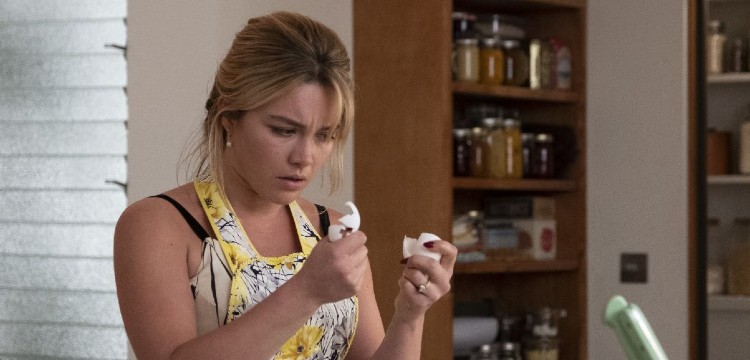By Kat Splane
When the trailer for “Don’t Worry Darling” first dropped in May of this year, no guesswork was needed as to the film’s genre. It’s a psychological thriller, and we know it’s a psychological thriller within the first few moments, because of the era. It’s the 1950s, and everything’s a little too pretty. All the streets are a little too placid; all the colors are a little too bright.
Perhaps it’s pushback to the far right’s reputed fixation with the era; perhaps it’s just progressivism taking its natural course. But mainstream culture has come to have an implicit resentment – almost a disgust – towards the 1950s, that transcends its hate for any other decade to date.
From “The Stepford Wives” to “Pleasantville” to “Don’t Worry Darling” – along with countless music videos, television shows, and song lyrics in between – the fifties have become a shorthand for fake perfection, a totem of everything superficial and contrived. Increasingly, it’s a superficiality that’s defined as being dark below the surface. What once was corny has now transitioned into creepy: just show picket fences and bright red nail varnish pinning clothes onto a clothesline, and viewers instantly will know that nothing is as happy as it seems.
I don’t have any particular attachment to the 1950s. I’m not old enough to remember it, not conservative enough to want to return to it, and despite having spent my elementary school years watching hundreds of films produced between the thirties and the sixties, the fifties in particular have never held much draw for me.
But there’s something unsettling to me about this recent trajectory. As a former history student, or maybe simply as a person, there’s something discomfiting about how easily we’ve reduced the real people of this era into a caricatured, contextless trope.
Apart from everything else, it doesn’t make much historical sense. Much has been made of “the perfect 1950s housewife” and the symbolism that surrounds her. But the idea that those things were in some way performative, or unnatural, always has been puzzling to me. Women in the fifties wore lipstick because women in the forties, thirties, and twenties had worn lipstick. They wore dresses and aprons because women in the decades prior had done the same. The only difference was that now they could have broad skirts – because the fabric wasn’t rationed. They could have vibrant colors – because they were no longer wearing faded hand-me-downs. In many ways, the culture was exactly what it always had been, but with one significant difference: for the first time in a long time, they could live without strain.
And that, I suppose, is what makes our mockery of the era so uncomfortable.
These were people who had waited their whole lives to be happy – through childhoods in the Great Depression, through young adulthoods spent at war – and they had reached a moment where everything lined up for the positive, for the first time in their lives.
In the years since, we’ve distorted that era’s happiness into something cartoonishly shallow – empty – full big fake smiles and vacant stupid eyes. But their happiness wasn’t just happiness, it was relief. And relief – after twenty years of hardship – is one of the last things to be fake.
Did the fifties have its vices? Absolutely. That’s beyond dispute. But they were not suddenly worse vices than they had been in the forties, or the thirties, or any of the years before then. The thing is, it’s hard to point the finger of accusation at boys in khaki as they march off to sacrifice their lives, or at people standing in a breadline. The easiest people to be mad at are people who have achieved happiness, and are living stable lives.
And so, the fifties becomes the natural outlet for all of our retrospective frustrations. That neat ten-year bracket becomes the storage box where we keep all of our resentments towards the past.
It’s a reasonable reaction. Still, there’s something poignant about taking a generation’s first memories of happiness and security – the first years in which they glimpsed a life without either hunger or war – and transforming it into some clownish ugly thing.
That post-war era was a short one. We don’t have to resent it, or debase it. The glow wore off soon enough on its own. Perhaps it’s time that we stepped back, and let that generation have that moment.
There’s no need for us to look back on those people with disgust, as they played house after childhoods of starvation, and young adulthoods of watching brothers die. It was us who twisted their happiness into an icon of sick perfection. As far as we know, it was simply joy.
Kat Splane is a California-based freelance journalist.


LOVE THIS REVIEW of “Don’t Worry Darling.” As you described the filmic approach to rendering a colorful fifties scene into a horrorscape, I suddenly pictured the reverse: What about taking characters from the 1950s and time-traveling them to a 2020s America of Tik Tok videos and Instagram feeds? Who’s world is the real living horror?